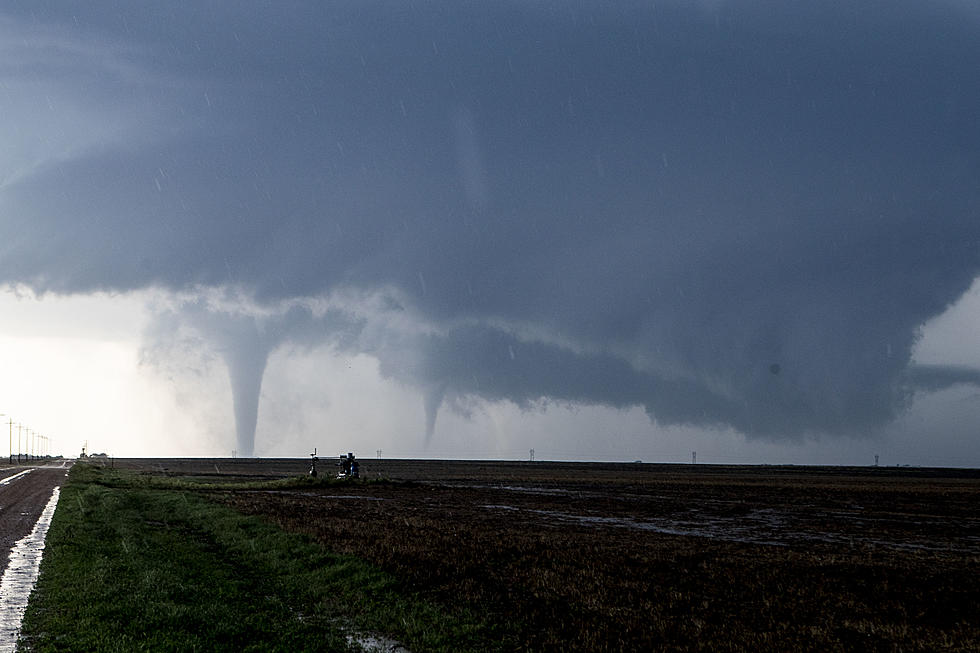
Should New York Worry about the Super Rare Cicada “Double Brood” This Summer?
An event said to happen once every 221 years will take place this spring, where billions of cicadas will rise from the dirt after multiple broods activate at the same time.
Some of us in New York might be wondering... are these billions of insects coming here? This is what we know.
Get Ready for a Noisy Summer
Cicadas are chunky black or olive green bugs with red eyes that are about the size as a human thumb. They have four membranous wings with a shiny tint, which allow them to fly long distances - but despite their bizarre look, they are best known for the racket they make.
Cicadas are noisy creatures that emit a long, ear-piercing buzz that some describe as a high-pitch whine. For those, like me, who grew up in cicada-heavy areas, that sound is synonymous with summer.
As for why cicadas are all over the headlines as of late, it's because their breeding cycle has led to two different broods to hatch at the same time, which will lead to a blizzard of bugs.
It's true that cicadas do spend their first 13 or 17 years of life underground, thus making them insects with one of the longest lifespans. Adults lay their eggs on tree branches and, when the nymphs hatch, they scurry down the tree and burrow about 8-inches deep into the ground. It's believed the insects spend the next decade feasting on the fluids emitted by roots.
They also molt, or shed their exoskeleton, at least five separate times while underground. Then, once they complete the cycle and the ground warms up to 64 degrees, they're ready to party.
When these cicadas emerge, it's said their density will yield up to 1.5 million insects per acre.
What Are Broods?
Smithsonian Magazine said there are 15 separate broods that scientists and bug enthusiasts have been tracking for centuries.
This is where it gets interesting because there are 2 groups that have different brooding cycles. Twelve of those broods emerge from the soil every 17 years while a separate group of 3 pop out of the ground every 13 years.
These broods also tend to have their own territories across multiple states, spanning from New York to Texas. And while double broods tend to happen once every 5 to 6 years, they tend to emerge in different parts of the country.
But, as the University of Connecticut explains, "Any two specific broods of different life cycles co-emerge once every 221 years."
This year, broods XIII and XIX will emerge at the same time, the first time they've emerged together since 1803! Also, it's said XIX is the "largest of all periodical cicada broods."
Read More: A "Pest-Pocalypse" Could Invade New York
These insects will co-emerge in the northern Illinois, especially around the Springfield area, so don't fall for the panicked headlines that claim an explosion of bugs will invade the Empire State. In fact, both broods emerging this year have territories far removed from New York.
Broods XIII and XIX are most prevalent in Illinois and Missouri. Although, brood XIX has some clutches scattered across Arkansas, Louisiana, Oklahoma, Mississippi, Alabama, Georgia, South Carolina, North Carolina, Virginia, and Tennessee.
That said, New York will not have to worry about seeing an abundance of cicadas this year, according to Smithsonian Magazine.
New York's Brood
Central New York does have a brood, VII, and it is nicknamed the "Onondaga brood." It last emerged in 2018 and won't come back until 2035. This brood has been documented in Onondaga, Cayuga, Seneca, Ontario, and Yates County.
Brood II, dubbed the "East Coast brood," also has territory in New York - but it's mostly in the southern part of the state and hugs the Connecticut state line up into the Albany area. That clutch is expected to next emerge in 2030 after last leaving the ground in 2013.
As you can see from the below image, it is impossible for these broods to co-emerge as they both are part of the 17-year life cycle and, more importantly, their territories don't overlap.
That said, those who deal with cicadas are also well aware of their biggest predator, the aptly named cicada- killer.
These insects are two-inch long wasps that tackle cicadas mid-flight and inject a venom that leaves them paralyzed. Those cicadas are in for a grim fate, as they are then dragged into the cicada killer's underground den that can be as long as 70 inches, and an egg is laid on top of them.
Read More: If You See This Highly Invasive Insect in Central NY, Kill It Immediately
The larval wasp emerges within 3 days and begins devouring the still-alive cicada over the span of one to two weeks. Even worse, these larvae know not to eat the cicada's nervous system until the bitter end because it ensures their meal stays alive for as long as possible.
For those who hate these bugs and the holes they leave in the lawn, I've found hot water works like a charm. I'd boil myself a pot of tea water and then pour it down the holes I see. If you hear a panicked buzzing sound, you have effectively removed the cicada killer.
Cicada killers are drawn to sparse lawns and bare, dry soil. So if you wish to take a less-lethal approach to encouraging these insects off your property, remedy the areas that they'd find most desirable for their home.
That said, enjoy the summer and whatever sounds that accompany the season.

Watch Out For These 5 Dangerous Invasive Pests In New York State
Gallery Credit: Yasmin Young
"I Found One!" Herkimer Diamond Mines Attract Thousands Every Summer!
Gallery Credit: Chuck D'Imperio
More From WIBX 950









